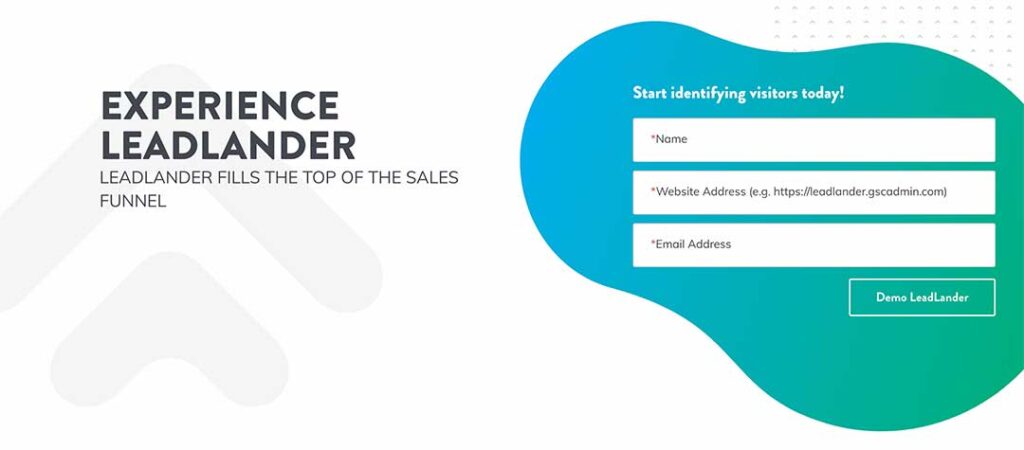Updated May 23, 2022
Every company wants to improve its sales pipeline. Doing so will not only increase the number of leads that you generate but will help you convert those leads at a higher rate. In that sense, optimizing your pipeline could be the key to reaching your company’s financial goals. One way to achieve this is to begin using marketing qualified leads (MQL), and sales qualified leads (SQL). But you might not be aware of what these are or how to use them to improve your sales pipeline. That’s why we’ve put together the following article. Keep reading to learn about MQL vs SQL prospects and how they can be leveraged to help your business work toward its goals.
Understanding MQLs Vs. SQLs
MQLs and SQLs can be difficult to untangle. It’s best to think of an MQL as a lead that’s ready for your sales department but not yet ready for a one-on-one conversation with a rep. SQLs, on the other hand, are ready for direct engagement with a sales representative.
If you think about your sales pipeline as a whole, a lead will become an MQL before becoming an SQL. Ultimately, the main point of differentiation to keep in mind is that an SQL is ready for a direct conversation with a sales rep while an MQL is not.
You might be wondering how to tell whether a lead is ready for direct engagement or not. The answer to this question is, unfortunately, not as straightforward.
Each company has to come up with its own set of distinguishing factors for MQLs and SQLs. This will involve figuring out when you’ve moved a lead far enough through your sales pipeline so that they’re ready to talk with a representative.
We cover these guidelines in a later section. For now, just remember that a company’s marketing and sales departments should come up with their definitions of SQLs and MQLs collectively.
How Utilizing An MQL Vs. SQL Strategy Will Impact Your Sales Pipeline
One of the most important moments in your sales cycle is when your marketing department passes off a lead to your sales department. When this handoff is complete, things tend to go pretty well. But if you pass off the prospect too soon or too late, you could risk losing them altogether.
This is why using the concept of MQLs and SQLs can enhance your sales cycle. Doing so gives you a framework that you can follow to determine when the opportune moment to complete the handoff is.
If your company can begin making handoffs at the right time consistently, it will almost definitely improve its sales figures.
Things To Consider While Making Your Definitions
As noted above, every company needs to set the exact definitions for MQLs and SQLs themselves. What works for Microsoft isn’t going to work for a new tech startup. As you think about defining these two concepts, you’ll want to consider the following factors.
Lead Behavior
Some companies choose to split their MQLs from their SQLs based on lead behavior. For example, you can tell a lot about how interested a prospect is in your company by how they interact with your website.
If a prospect keeps coming back to your website repeatedly, then there’s a better chance they’re an SQL than an MQL. Here are some other behavioral factors that you might want to consider:
- How many times a prospect visits a specific page on your site
- Which types of content they’re looking at (i.e., pricing or basic information)
- The channels that the leads came from
To keep track of all of this data, you need a great website analytics tool. LeadLander is perfect for this. It will provide you with all of the data that you need to analyze the behavior of your leads so that you can classify them properly.
Lead Demographics
You might also find that demographics have a big impact on how likely a lead is to be ready for a direct conversation with your sales department. There are a few different types of demographic information you can look into.
You might group your leads into personas and find that prospects belonging to a certain set are more likely to convert into paying clients than others. There could also be a meaningful distinction between leads from different industries or those of certain company sizes.
The key is to figure out what matters to your company, then use that information to group your prospects accordingly.
Lead Scoring
Lead scoring is another fantastic way to group your leads into MQLs and SQLs. Its major benefit is its objectivity. You simply create a point system that works for you, assign those points to each lead, and see which ones score highest. There’s no need to bring your team’s subjective judgment into it, which could reduce the risk that you make the wrong decision.
However, one thing to keep in mind with lead scoring is that it requires considerable manual maintenance. You may find that the amount of employee hours you need to dedicate to maintaining a lead scoring system isn’t worth the potential benefits.

Tips for converting MQLs into SQLs
Your goal with marketing-qualified leads is to get them close enough to conversion to pass them off to your sales team. To do that consistently, you’ll need to use strategies designed to push MQLs deeper into your sales funnel.
Here are four that can help you achieve this.
Use email drip campaigns
Email drip campaigns are the perfect way to push MQLs deeper into your sales funnel. They’re designed to start broad and then gradually help a lead get closer and closer to making a purchasing decision.
Some research shows that drip campaigns can generate 50% more sales-ready leads than regular marketing. Plus, companies that do drip campaigns generate about 80% more sales at 33% lower costs.
Bring as much personalization into your processes as possible
Personalization is another tool that you can leverage to turn a higher percentage of your MQLs into SQLs. There’s an overwhelming amount of research showing that personalization makes customers more likely to buy something. Case in point:
- 80% of customers are more likely to buy from brands with tailored experiences
- 66% of consumers expect brands to understand their individual needs
- 71% of customers are frustrated by impersonal shopping experiences
- 90% of U.S. consumers find the idea of personalization appealing
The bottom line is that bringing personalization into your campaigns will help you get closer to your leads.
Take advantage of retargeting
Many of the leads you encounter won’t be ready to make any purchasing decision the first time they interact with your brand. That’s why retargeting is so important. You want to make sure your company is what comes to mind when the lead is finally ready to make a purchase.
Many stats reinforce how important retargeting is for this process. For example:
- Retargeting ads have a 1,046% efficiency rate
- Retargeting can improve conversion rates by 150%
- Retargeting can improve online sales by 20%
When you put it all together, it’s easy to see why retargeting is so common. Taking advantage of the tactic could be precisely what your company needs to convert a higher percentage of its MQLs into SQLs.
Offer incentives
You may also want to offer incentives if you’re having difficulty converting a good rate of MQLs into SQLs.
Research estimates that about 84% of U.S. businesses use non-cash incentives to acquire new customers or retain existing ones. Amazon recently found that 93% of customers could be swayed to a new brand with an incentive offer.
Statistics like these show that the right incentive can win almost any customer – regardless of brand loyalty. And if you’re not offering incentives, you may lose an MQL to a company that is.
Consider Creating An SLA
At this stage of the process, you may want to create a service level agreement or SLA. An SLA will document the decisions you’ve made about SQLs and MQLs. It’s a document that both your sales and marketing departments will be able to look to when they need help figuring out whether a prospect is an SQL or an MQL.
Keep in mind, you’ll need buy-in from both departments to create an SLA that offers real value. So be sure to draft the document with input from your leadership in sales and marketing.
Come Up With A Repeatable Process For Handoffs
The last thing you want is a valuable prospect to get lost in the shuffle as you move them from marketing to sales. That’s why the next step to using MQLs and SQLs to improve your sales pipeline is to come up with a repeatable handoff process.
You’ll want to put together a set of guidelines that create an expectation for what the handoff should look like. This may involve defining who can make handoffs in marketing and who can receive them in sales.
You might also add information about how the leads will be passed off. Will it be done through email? Or perhaps you’ll track via spreadsheets or an analytics tool.
It’s not overly important what the process looks like. You just need to make sure it works for your company and can be replicated until it becomes second nature to your teams.
Continue Adapting As Needed
As you begin using MQLs and SQLs for your sales pipeline, there will likely be some growing pains. It takes time to figure out how to leverage these concepts in the best way for your company’s unique needs.
That’s why it’ll be important for you to keep an open dialogue with your sales and marketing teams. Listen to their input as you implement this process, and don’t be afraid to make changes that both sides can agree to when needed. As time goes on, you’ll find that you’re starting to get more and more out of your MQLs, SQLs, and the handoff process.

Use LeadLander To Get Access To Better Data For Your Sales Pipeline
To get the most impact out of using MQLs and SQLs, you’re going to need access to a lot of data. Having access to this data will also make it easier for your sales and marketing teams to figure out when a handoff should occur. That’s why you should consider using LeadLander.
Our platform was created to provide your marketing and sales teams with a wealth of website analytics information. They’ll be able to use the tool to discover new leads, validate interest from cold calls, and improve the accuracy of your pipeline.

If you’re serious about leveraging MQLs and SQLs to improve your sales pipeline, then consider LeadLander. Start today without having to pay a dime by signing up for our free 14-day trial. We’d love to help you improve your sales pipeline and look forward to hearing from you to get started with that process.
